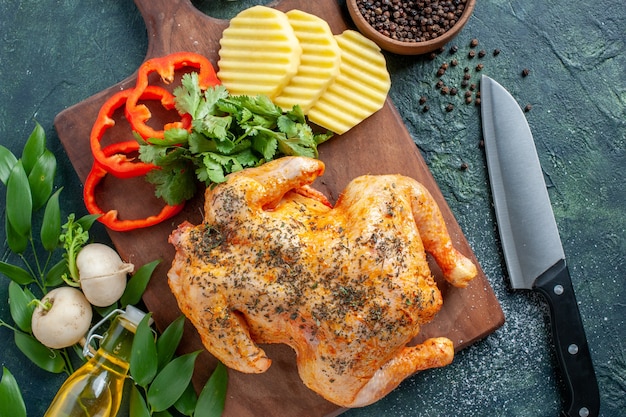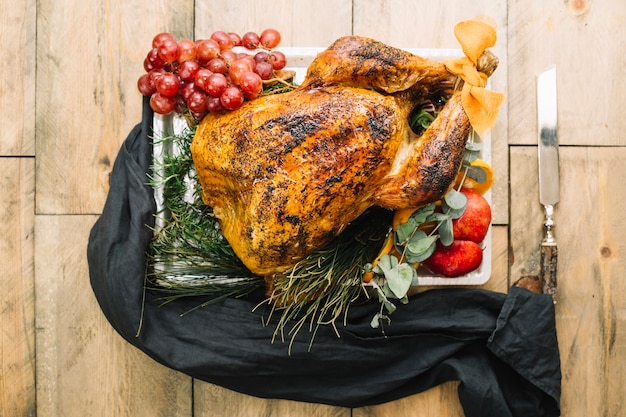What is the best liquid to tenderize meat?
Tenderizing meat is a common practice in cooking, especially when dealing with tough cuts of meat. There are various methods to achieve tender meat, and one popular technique involves using liquids to break down the muscle fibers and connective tissues. But what exactly is the best liquid to tenderize meat? Let’s explore the options.
The science behind tenderizing meat
Before we dive into the different liquids, it’s important to understand why tenderizing meat works. Meat contains proteins, specifically myosin and actin, which form strong bonds and create the structure of the muscle fibers. These bonds can be quite tough and result in a chewy texture. Tenderizing breaks down these bonds, making the meat more tender and easier to eat.
The role of liquids in meat tenderization
Liquids help in the tenderization process by introducing enzymes or acids that can break down the protein bonds. These liquid agents work by denaturing the proteins, which means they alter the structure and make them more tender. Different liquids have varying levels of effectiveness, so let’s take a closer look at some popular choices:
1. Acidic liquids:
Liquids like vinegar, lemon juice, and wine contain acids that can effectively tenderize meat. The acid helps to denature the proteins and break down the collagen, resulting in a more tender texture. However, it’s important not to overdo it, as excessive exposure to acids can lead to mushy or overly soft meat.
2. Dairy-based liquids:
Milk and yogurt are known for their tenderizing properties. They contain lactic acid, which helps break down the proteins and tenderize the meat. Dairy-based marinades are particularly effective for cuts like chicken, pork, and lamb.
3. Enzymatic liquids:
Pineapple juice, papaya juice, and ginger juice contain natural enzymes that can tenderize meat. These enzymes, such as bromelain and papain, break down the proteins and collagen, resulting in a softer texture. However, it’s essential to be cautious with enzymatic liquids as they can quickly turn meat mushy if left for too long.
Tip: It’s always a good idea to marinate the meat for several hours or overnight to maximize the tenderizing effect of liquid agents.
Choosing the best liquid for your needs
The choice of which liquid to use for tenderizing meat ultimately depends on personal preference and the type of meat being cooked. For example, acidic liquids work well for tougher cuts of beef, while enzymatic liquids are more suitable for delicate meats like fish or shrimp.
Experimentation is key when determining the best liquid for tenderizing meat. It’s a good practice to keep notes on different liquids and their effects on various cuts of meat to find what works best for you.
In summary
Tenderizing meat using liquids can greatly enhance the flavor and texture of your dishes. Acidic liquids, dairy-based liquids, and enzymatic liquids all have their benefits when it comes to breaking down tough muscle fibers and collagen. Understanding the science behind the tenderizing process and experimenting with different liquids will help you achieve the desired level of tenderness in your meat preparations.
Why Does Milk Soften Chicken?
When it comes to cooking chicken, there are various methods to achieve tender and juicy results. One popular technique is using milk as a tenderizer. But why does milk have this effect? Let’s explore the science behind it.
The Role of Milk in Tenderizing Chicken
Milk contains an enzyme called protease that helps break down the proteins present in chicken. This enzyme works by breaking the peptide bonds within the proteins, which results in softer and more tender meat.
In addition to protease, milk also contains lactic acid. The acidity of the lactic acid helps to denature the proteins, further contributing to the tenderization process.
How to Use Milk as a Tenderizer
To use milk as a tenderizer for chicken, you can marinate the chicken in milk for a period of time before cooking. This allows the enzymes and acid in the milk to work on the proteins and make the meat more tender.
Marinating the chicken in milk for at least 30 minutes, or even overnight, can significantly improve its tenderness and flavor.
For best results, you can add other ingredients to the milk marinade to enhance the flavor. Some popular additions include garlic, herbs such as thyme or rosemary, and spices like paprika or cayenne pepper.
Other Benefits of Using Milk as a Chicken Tenderizer
Using milk as a tenderizer not only improves the texture of the chicken but also helps to remove any unpleasant odors that may be present in the meat. The enzymes and acids in the milk can neutralize the compounds responsible for unwanted smells.
Moreover, milk can also help to retain moisture in the chicken during the cooking process. This results in a juicier and more flavorful end product.
In conclusion, milk is a versatile and effective tenderizer for chicken due to its enzymes and acidity. By marinating the chicken in milk before cooking, you can achieve a tender and succulent dish that is sure to impress.
Is it OK to soak raw chicken in water?
When it comes to preparing and cooking chicken, there are various techniques that people employ to improve the texture and flavor of the meat. One such technique is soaking raw chicken in water before cooking. However, is this practice safe and effective? Let’s take a closer look.
Why do people soak chicken in water?
Soaking chicken in water is often done to remove any potential bacteria or impurities present on the surface of the meat. Additionally, some individuals believe that soaking chicken in water can help tenderize the meat and make it juicier.
Food safety concerns
While soaking chicken in water may seem like a good idea for food safety, it can actually increase the risk of bacterial contamination. When chicken is soaked in water, any bacteria present on the surface can spread to the surrounding water, increasing the likelihood of cross-contamination.
According to the Food Standards Agency (FSA) in the UK, it is not recommended to soak raw chicken in water as it may spread bacteria and increase the risk of food poisoning.
“Raw chicken should be handled with care to prevent the spread of harmful bacteria, such as Campylobacter or Salmonella.” – Food Standards Agency (FSA)
Best practices for handling chicken
To ensure the safety of your chicken and prevent foodborne illnesses, here are some best practices to follow:
- Store chicken at the correct temperature: Keep raw chicken refrigerated at or below 5°C (41°F) to prevent bacteria growth.
- Separate raw chicken from other foods: Store and prepare raw chicken separately from other foods to avoid cross-contamination.
- Cook chicken thoroughly: Make sure to cook chicken thoroughly, reaching an internal temperature of 75°C (167°F) to kill any harmful bacteria.
By following these guidelines, you can ensure that your chicken is safe to eat and reduce the risk of foodborne illnesses.
In conclusion, soaking raw chicken in water is not recommended due to the increased risk of bacterial contamination. It is important to handle and prepare chicken safely to prevent the spread of harmful bacteria and ensure the safety of your meals.
Do you boil water first before adding chicken?
One common cooking dilemma many people face is whether to boil water before adding chicken or not. While there are different schools of thought on this subject, the general consensus is that boiling chicken before cooking it can have several benefits.
Why should you boil water first?
Boiling water before adding chicken helps to remove impurities and bacteria from the meat. This step is particularly important if you are using frozen chicken as it may contain harmful microorganisms that can cause foodborne illnesses. Boiling the chicken also helps to tenderize the meat and enhance its flavor.
The right way to boil chicken
To properly boil chicken, follow these simple steps:
- Fill a large pot with enough water to fully submerge the chicken.
- Add your desired seasonings, such as salt, pepper, and herbs, to enhance the flavor.
- Bring the water to a boil over medium-high heat.
- Once the water is boiling, carefully add the chicken pieces.
- Cook the chicken for about 15-20 minutes, or until it reaches an internal temperature of 165°F (74°C).
- Remove the chicken from the pot and let it rest before using it in your desired recipe.
Note: It’s important to ensure that the chicken is fully cooked before consuming to avoid any health risks.
Expert opinion
“Boiling chicken before cooking can help to remove any contaminants and bacteria present in the meat, ensuring a safe and healthy meal.” – Chef Emily Thompson
While boiling chicken may add an extra step to your cooking process, it offers numerous benefits in terms of food safety and flavor. So, the next time you’re preparing chicken, consider boiling it first for a delicious and worry-free meal.


